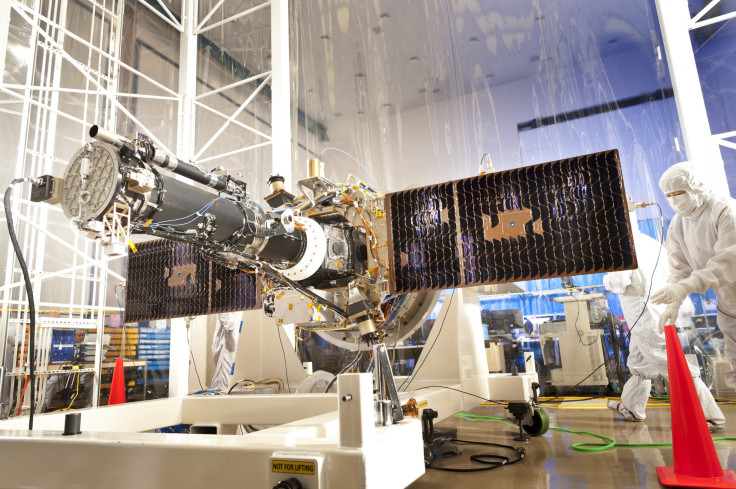NASA IRIS Launch Live Stream: Watch New Solar Observatory Make Its Way To Earth's Orbit
NASA's IRIS launch will begin at 6:27 p.m. PDT, 9:27 p.m. EDT, on Thursday. The new solar observatory will study how energy is transferred and created throughout the Sun.
NASA's Interface Region Imaging Spectrograph, or IRIS, mission will focus on just 1 percent of the Sun at any given moment in extreme detail, offering a glimpse of the Sun's atmosphere that is usually invisible. Unlike NASA's other solar observatories, including the Solar Dynamics Observatory, or SDO, and the NASA-Japan Aerospace Exploration Agency’s Hinode, IRIS will study the chromosphere, the second of three layers that make up the Sun's atmosphere. The chromosphere is usually invisible due to the brightness of the Sun's first atmospheric layer, the photosphere. What's unique about the chromosophere, as well as the Sun's corona, is the extreme heat in this part of the atmosphere.

While temperatures decrease in the photosphere the further one goes away from the surface of the Sun, temperatures increase the closer one gets to the corona, the extended outer atmosphere of the Sun. According to NASA, it is unclear why temperatures increase as energy travels further away from the surface. As energy travels from the surface to the corona, temperatures can increase from 6,000 degrees Fahrenheit to millions of degrees Fahrenheit.
NASA's IRIS mission will examine solar features as small as 150 miles in diameter and act as a magnifying lens to the SDO and Hinode observatories. Jim Hall, mission manager for IRIS, said of the solar observatory, "It's going to look in closely, and it's going to look at that specific region to see how the changes in matter and energy occur in this region. It's going to collectively bring us a more complete view of the sun."
By observing solar phenomena, such as solar flares, in great detail, IRIS could also shed light on meteorological phenomena on Earth. Satellites and other equipment on Earth are sensitive to solar flares, and a better understanding of these solar eruptions could lead to better protecting vulnerable equipment.
The seven-foot spacecraft will be launched into Earth's orbit via the Pegasus XL rocket. The IRIS spacecraft will orbit around the Earth and cross the north and south poles in its journey. The IRIS launch live stream, courtesy of NASA, can be viewed below.
© Copyright IBTimes 2024. All rights reserved.






















